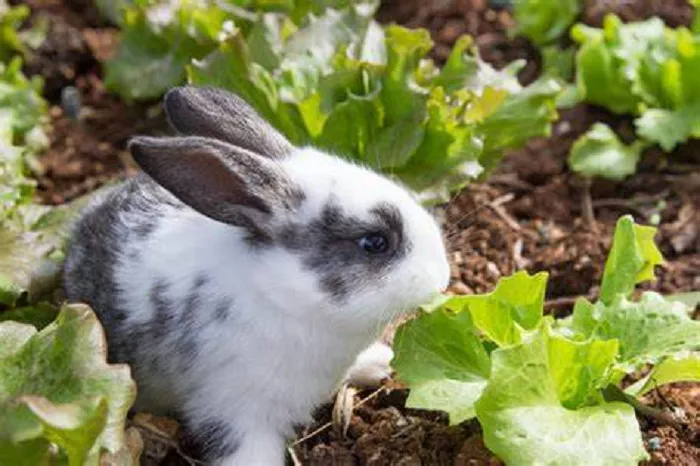Deer and rabbits may look cute in the wild, but in the garden, they can become a real problem. They often snack on flowers, leaving your beds looking half-eaten overnight. Fortunately, some annual flowers are naturally unappetizing to these animals. This guide offers practical tips and a curated list of annuals that are not on the menu for deer and rabbits. Whether you’re planting containers, borders, or flower beds, these blooms will bring color—without attracting hungry visitors.
Understanding Deer and Rabbit Behavior in the Garden
Before you plant, it helps to understand why deer and rabbits eat certain flowers and avoid others.
Why Some Plants Get Eaten
Deer and rabbits go for plants that are soft, sweet-smelling, or have tender leaves. They are especially drawn to new growth in the spring. When food is scarce, even “resistant” plants might be nibbled.
What They Avoid
They tend to avoid plants with strong scents, fuzzy leaves, or bitter taste. Some textures are unpleasant to them. Others may have compounds that irritate their digestion or smell unappetizing.
What Are Annual Flowers?
Before we dive into the list, let’s clarify what “annual” means.
Annuals Defined
Annual flowers complete their life cycle in one season. You plant them in the spring, they bloom all summer, and then they die after the first frost. Unlike perennials, they don’t return the next year.
Why Choose Annuals?
They’re easy to grow, offer constant color, and let you change your garden design each year. They’re perfect for flower beds, containers, and hanging baskets.
Best Annual Flowers That Deer and Rabbits Tend to Ignore
Here’s a list of annuals that are usually avoided by deer and rabbits. While no plant is 100% animal-proof, these varieties are among the most reliable.
Marigolds (Tagetes spp.)
1.Why They Work
Marigolds have a strong, pungent smell that turns off most animals. Their bitter taste and coarse texture make them unappealing.
2.Garden Benefits
Besides being critter-resistant, marigolds deter insects and are easy to grow in sunny spots.
3.Tips for Planting
Plant in full sun. Deadhead regularly to extend blooming. Works well in borders and containers.
Zinnias (Zinnia elegans)
1.A Bright, Bold Bloom
Zinnias are bright and colorful, with stiff stems and fuzzy leaves that deer and rabbits dislike.
2.Easy Care
Zinnias thrive in sun and need little care. Just keep them watered and remove spent blooms.
3.Popular Varieties
Try ‘Profusion’ or ‘Benary’s Giant’ for large, showy blooms.
Snapdragons (Antirrhinum majus)
1.Bitter and Not Tasty
Snapdragons contain alkaloids that animals avoid. Their upright blooms add vertical interest.
2.Best Conditions
Cool-season annuals, best in early spring or fall. Great in borders and mixed containers.
3.Colors Galore
They come in pink, red, yellow, purple, and white.
Lantana (Lantana camara)
Scent Repels Pests
Lantana’s strong scent and slightly toxic leaves keep deer and rabbits away.
Thrives in Heat
Perfect for hot, sunny spots. Needs little water once established.
Color Combos
Often multi-colored—pink, orange, red, and yellow in one bloom.
Cleome (Cleome hassleriana)
Also Known as Spider Flower
Tall and elegant, cleome has spiky, scented blooms that animals don’t like.
Why It Works
The scent is strong and musky. The stems are sticky, which animals dislike.
Where to Plant
Use in the back of flower beds for height. Needs full sun.
Dusty Miller (Senecio cineraria)
Silvery and Soft-Looking
Though beautiful, its fuzzy, felt-like leaves are unappealing to critters.
Great Filler Plant
Perfect for mixing with colorful blooms. Works in beds, containers, or edging.
Ageratum (Ageratum houstonianum)
Fluffy Blooms, Bitter Taste
Its soft, tufted flowers are pretty, but its foliage has a strong scent.
Easy to Grow
Does best in partial to full sun. Choose blue or purple varieties for best effect.
Nicotiana (Nicotiana alata)
obacco Plant Variety
This flowering tobacco is not tasty to deer or rabbits. Its scent is sweet to humans but not animals.
Evening Scent
Blooms open more in the evening. Ideal for patios and nighttime gardens.
Cosmos (Cosmos bipinnatus)
Airy, Dainty Flowers
Cosmos have feathery leaves and papery blooms, which animals tend to ignore.
Thrives on Neglect
Drought-tolerant and perfect for naturalistic gardens.
Salvia (Salvia splendens)
Aromatic and Unappetizing
Strong fragrance and textured leaves keep animals away. Also attracts pollinators.
Long-Lasting Blooms
Red, purple, and blue varieties bloom from summer to frost.
Celosia (Celosia argentea)
Flame-Like Flowers
Celosia’s unusual texture and taste are not appealing to wildlife.
Heat-Loving Annual
Thrives in warm spots. Choose plume, wheat, or cockscomb varieties.
Verbena (Verbena spp.)
Delicate Looks, Strong Scent
Low-growing but full of fragrance that repels herbivores.
Continuous Blooms
Will flower all season with deadheading. Works well in hanging baskets.
Tips for Keeping Critters Away
Even with resistant plants, extra steps help keep animals out of your garden.
1.Use Physical Barriers
Install fencing or netting. Even short fences can deter rabbits.
2.Try Repellents
Use natural repellents like garlic sprays or commercial deer deterrents. Reapply after rain.
3.Mix and Match
Combine resistant annuals with a few sacrificial plants to distract animals.
Companion Planting Techniques
Use Scent to Your Advantage
Plant strong-smelling herbs like lavender, basil, or thyme around annuals to add extra protection.
Height and Texture Matter
Layer your garden using plants of different textures and heights to confuse and discourage browsing animals.
Container Gardening Solutions
Raised Plants are Safer
Planting in tall pots keeps blooms out of reach.
Ideal for Small Spaces
Great for patios and balconies where wildlife traffic is lower.
Common Myths About Deer and Rabbit-Resistant Plants
No Plant Is 100% Safe
If animals are hungry enough, they may eat even resistant flowers.
Native Doesn’t Always Mean Resistant
Not all native plants are unappetizing to wildlife. Do your research.
Conclusion
A beautiful flower garden doesn’t have to become a buffet for deer and rabbits. By choosing the right annuals—and combining that with smart planting strategies—you can enjoy vibrant color all season without the frustration of lost blooms. Keep experimenting, and over time you’ll find what works best for your space.


